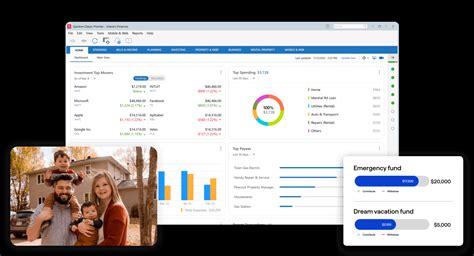As the summer months approach, maintaining a lush and vibrant lawn becomes a top priority for many homeowners. A well-manicured lawn not only enhances the aesthetic appeal of a property but also provides a comfortable and inviting space for outdoor activities. Summer Classics, a renowned brand in the outdoor furniture industry, understands the importance of a beautifully maintained lawn. In this article, we will explore five essential lawn care musts to help you achieve a stunning outdoor space that perfectly complements your Summer Classics furniture.
Key Points
- Regular mowing and edging to maintain a neat appearance
- Proper watering techniques to promote healthy grass growth
- Fertilization and soil conditioning for optimal nutrient levels
- Pest control and weed management to prevent damage and discoloration
- Seasonal pruning and trimming to enhance the overall landscape
Understanding the Importance of Lawn Care
A well-maintained lawn is not just a matter of aesthetics; it also plays a crucial role in preventing erosion, reducing weed growth, and creating a safe and healthy environment for outdoor activities. By following these five summer lawn care musts, you can ensure your lawn remains lush, green, and vibrant throughout the warmest months of the year. According to a study by the National Association of Landscape Professionals, a well-manicured lawn can increase a property’s value by up to 15%. Regular lawn maintenance is essential to achieve this level of quality.
1. Regular Mowing and Edging
Mowing and edging are two of the most critical lawn care tasks, especially during the summer months. It is essential to maintain your lawn at the recommended height for your specific grass type, as over-mowing can lead to stress and disease. For example, Bermuda grass should be maintained at a height of 1-2 inches, while Kentucky bluegrass should be kept at 2.5-3 inches. Edging, on the other hand, helps to create a clean and defined border between your lawn and surrounding features, such as gardens, sidewalks, or patios. By using a string trimmer or edger, you can achieve a precise and manicured look that complements your Summer Classics furniture.
| Lawn Type | Recommended Mowing Height |
|---|---|
| Bermuda Grass | 1-2 inches |
| Kentucky Bluegrass | 2.5-3 inches |
| Zoysia Grass | 1-2 inches |
2. Proper Watering Techniques
Watering is another critical aspect of lawn care, particularly during the hot summer months. Over-watering can lead to shallow root growth, making your lawn more susceptible to disease and pests. On the other hand, under-watering can cause stress and discoloration. To promote healthy grass growth, it is essential to water your lawn deeply but infrequently, allowing the soil to dry slightly between waterings. According to the Environmental Protection Agency, a well-watered lawn can use up to 50% less water than a lawn that is watered excessively. This not only helps to conserve water but also reduces the risk of disease and pests.
Fertilization and Pest Control
Fertilization and pest control are two essential lawn care tasks that can make a significant difference in the health and appearance of your lawn. By applying a balanced fertilizer during the growing season, you can promote healthy grass growth and enhance the overall color and texture of your lawn. However, it is crucial to choose a fertilizer that is suitable for your specific grass type and climate. For example, a slow-release fertilizer can provide nutrients to your lawn over an extended period, while a fast-release fertilizer can provide a quick boost of nutrients. Pest control, on the other hand, helps to prevent damage from insects, such as white grubs or chinch bugs, which can cause significant damage to your lawn if left unchecked.
3. Fertilization and Soil Conditioning
Fertilization and soil conditioning are critical components of lawn care, as they provide essential nutrients for healthy grass growth. By applying a balanced fertilizer during the growing season, you can promote healthy grass growth and enhance the overall color and texture of your lawn. Soil conditioning, on the other hand, helps to improve the structure and fertility of your soil, allowing for better water infiltration and root growth. According to a study by the National Turfgrass Federation, a well-fertilized lawn can reduce the need for pesticides and herbicides by up to 50%. Regular soil testing can help you determine the best fertilizer and soil conditioning products for your specific lawn.
4. Pest Control and Weed Management
Pest control and weed management are essential lawn care tasks that can help prevent damage and discoloration. By identifying and controlling common lawn pests, such as white grubs or chinch bugs, you can prevent significant damage to your lawn. Weed management, on the other hand, helps to prevent the growth of unwanted weeds, which can compete with your grass for water and nutrients. By using a combination of cultural, mechanical, and chemical controls, you can effectively manage weeds and prevent them from taking over your lawn. For example, hand-weeding can be an effective method for removing weeds, while herbicides can be used to control large areas of weeds.
Seasonal Pruning and Trimming
Seasonal pruning and trimming are essential lawn care tasks that can help enhance the overall appearance of your lawn and landscape. By pruning and trimming trees, shrubs, and other plants, you can maintain their shape and promote healthy growth. This can also help to create a clean and defined border between your lawn and surrounding features, such as gardens, sidewalks, or patios. According to the National Association of Landscape Professionals, regular pruning and trimming can increase the value of a property by up to 10%. Regular pruning and trimming can also help to prevent overgrowth, which can lead to a messy and unkempt appearance.
5. Seasonal Pruning and Trimming
Finally, seasonal pruning and trimming are essential lawn care tasks that can help enhance the overall appearance of your lawn and landscape. By pruning and trimming trees, shrubs, and other plants, you can maintain their shape and promote healthy growth. This can also help to create a clean and defined border between your lawn and surrounding features, such as gardens, sidewalks, or patios. By incorporating these five summer lawn care musts into your maintenance routine, you can ensure your lawn remains lush, green, and vibrant throughout the warmest months of the year.
What is the best time to water my lawn?
+The best time to water your lawn is during the early morning hours, when the sun is not too high in the sky. This helps to minimize evaporation and reduce the risk of fungal diseases.
How often should I mow my lawn?
+The frequency of mowing depends on the type of grass and the growth rate. As a general rule, it is recommended to mow your lawn once a week during the growing season.
What is the best way to control weeds in my lawn?
+The best way to control weeds in your lawn is to use a combination of cultural, mechanical, and chemical controls. This can include hand-weeding, herbicides, and proper lawn maintenance practices.


